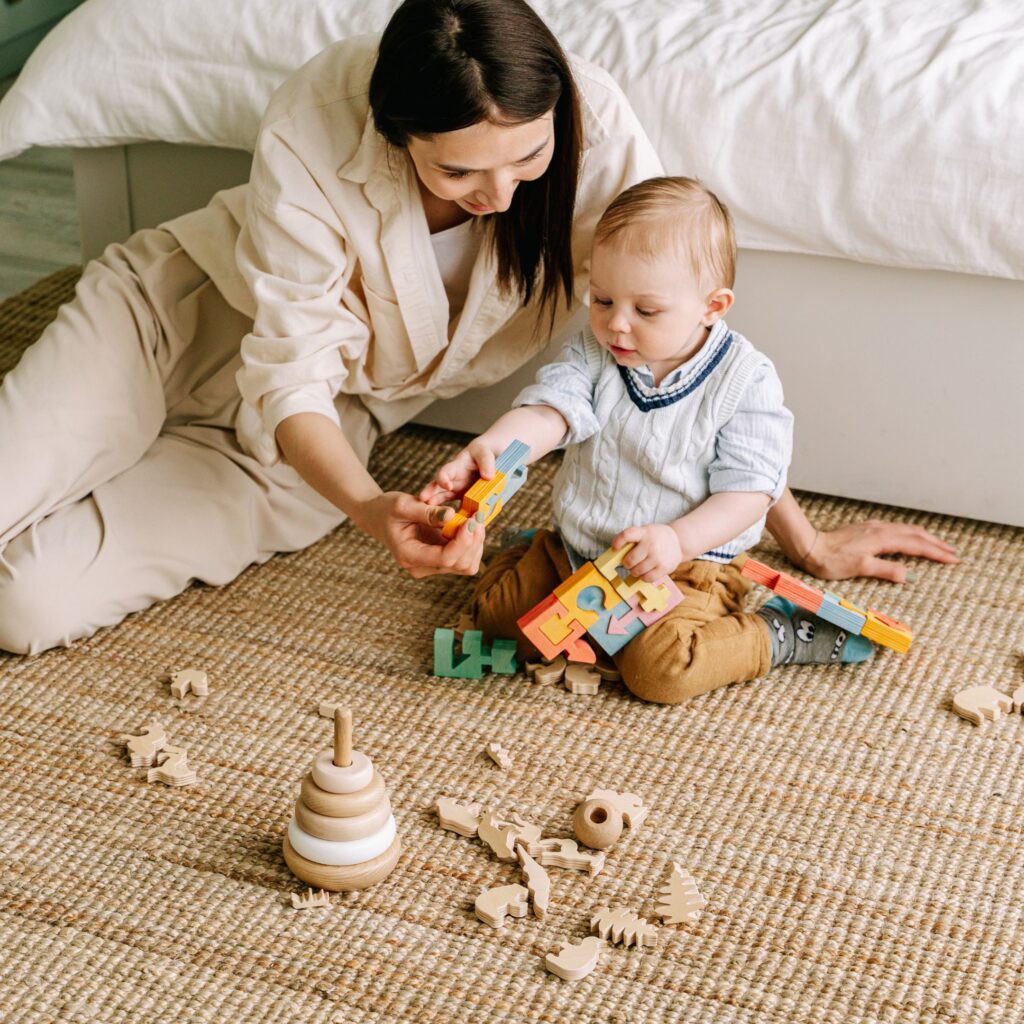How to Travel with Young Children – the Montessori Way

Traveling with little ones is never boring, right? Whether you’re headed to Grandma’s for the holidays, taking a road trip, or flying to another country, there’s a lot to think about when kids are in tow. But here’s the thing: travel doesn’t have to feel overwhelming, even with small children. If you sprinkle in a little Montessori magic—like preparation, some freedom of movement, and just letting go of perfection—it can actually be fun. Let’s talk about how to prepare, travel, and settle into new environments in a way that’s Montessori-aligned but still practical for real-life chaos.

Preparing Your Child for Travel
First things first—preparation is everything when it comes to traveling with kids. It’s not just about packing bags (though that’s a big part of it). Montessori is all about respecting your child as a person, which means helping them understand what’s about to happen.
Start by explaining the plan in simple terms. For example, “We’re going to pack our bags, drive to the airport, and then take a plane to visit Grandma. She’ll meet us at her house, and we’ll stay there for a few days.” Even if your child is young, hearing what’s coming can help them feel more secure.
If they’re old enough, you can involve them in packing their own bag. Let them choose a favorite toy, book, or even their own snacks for the trip.
And don’t underestimate the power of books to prepare them! Reading together about travel can make the whole experience less overwhelming. A few favorites:
- “Going on a Road Trip: A Toddler Prep Book” by ReadySetPrep
- “Going on an Airplane: A Toddler Prep Book” by Amy Kathleen Pittman
- “Let’s go on a plane ride!: A First-Time Airport and Airplane Adventure for Young Travelers“ by Katrina Liu
- Or many other favorites in our Amazon Travel Recommendations List
If you’re visiting family, show your child pictures of who they’ll see and talk about what to expect. “This is Aunt Sarah. She has a big dog named Max. He’s friendly, but he might bark when we first get there.” Little things like this can make a big difference. For trips to new places or countries, introduce simple details about the culture. “We’re going to Mexico. People there might speak Spanish, and we’ll eat tacos!” It’s a great way to build respect for different traditions while getting them excited about the trip.

Freedom of Movement While Traveling
Now let’s talk about the actual journey. This can be tricky because, let’s face it, kids aren’t built to sit still for long stretches. But with a little creativity, you can work in some freedom of movement.
If you’re driving, plan for stops where your child can stretch their legs. Even a quick walk around a rest area can make a big difference. On a plane, take advantage of boarding time or any delays by letting your little one explore the airport. For the moments when they do have to sit still, here are some Montessori-friendly activities that are easy to pack and won’t leave you with a giant mess:
- Magnetic toys or puzzles.
- Reusable stickers or dot stickers.
- A small travel drawing board or crayons with a notebook.
- Sensory bottles (sealed and spill-proof).
- Stacking toys or nesting cups.
These activities are great for keeping little hands busy without the need for screens. Check out our full list of travel favorites on our Amazon Travel Recommendation List

Adding Snacks to the Mix
Let’s be real—traveling on an empty stomach is hard for anyone, and for kids, hunger can flip the switch from calm to meltdown in seconds. That’s why snacks aren’t just a good idea; they’re essential for keeping your child’s needs met and their emotions in check while traveling. Montessori teaches us to observe and respond to our child’s needs, and hunger is no exception.
Bringing along familiar, easy-to-eat snacks can make a world of difference during a long car ride or flight. Think cut-up fruit, cheese sticks, crackers, rice cakes, or even mini sandwiches. The key is keeping it simple, mess-free, and something they’ll actually eat. You can also make snack time an engaging activity. Let your child help prepare their snack bag before the trip—choosing their favorites gives them a sense of control and excitement about the journey ahead.
Having snacks on hand is more than just avoiding hanger—it’s also about creating a sense of routine in unfamiliar settings. Offering snacks at regular intervals can provide a comforting rhythm when everything else feels new and unpredictable. And remember, a well-fed child is far more likely to stay calm and engaged, making travel smoother for everyone. A win-win, right?

Creating a Temporary Prepared Environment
Once you arrive, the first step is to create a little “yes space” for your child. This doesn’t have to be fancy—it’s just a small area where they can safely play or explore without constant supervision.
If you’re staying at a hotel, this might mean setting up a corner with their toys, books, and a blanket from home. A familiar item like a stuffed animal or pillow can help them feel grounded.
At a family member’s house, it might mean asking to temporarily move fragile items out of reach or setting up a play area in a quiet corner. Remember, kids thrive on consistency, so even small touches like these can make a big difference. And here’s the Montessori twist: let your child help with setting up their space. Give them a sense of ownership, even in a new environment.
Navigating Non-Montessori Environments
Not every environment or person you encounter will be Montessori-aligned, and that’s okay. Your child isn’t going to lose the foundation you’ve built just because things look different for a few days.
If family members want to give your child a non-Montessori toy or engage them in a way you wouldn’t normally encourage, use your judgment. If it’s harmless, let it go—travel is about flexibility. But if it’s something that conflicts with your core values (like pressuring your child to give hugs), feel free to step in. A simple, polite response like, “We’re teaching Alex to decide when they feel ready for hugs,” can go a long way. If relatives or friends are open to learning, take the opportunity to share why you approach things the way you do. But don’t feel pressured to “convert” everyone around you. Sometimes, the best option is to let things be.

Embracing the Chaos
Here’s the truth: traveling with kids is unpredictable. There will be meltdowns, missed naps, and spilled snacks. But the goal isn’t perfection—it’s connection. Try to let go of rigid expectations and focus on being present with your child. Laugh when things go sideways (because they will), and look for small moments of joy, like watching airplanes take off or spotting animals during a road trip. And don’t forget to enjoy the destination. Whether you’re visiting family or exploring a new country, take the time to soak it all in.

Respecting the Culture of Your Destination
If you’re traveling internationally, this is a great opportunity to model respect for different cultures. Show your child how to greet people politely, explain why certain customs are important, and encourage curiosity about new foods or traditions. Teaching your child to observe and appreciate cultural differences is one of the best gifts you can give them—and it aligns beautifully with Montessori’s global perspective.
Wrapping It Up
Travel with small children is never perfect, but it can be meaningful and fun. With a little preparation, flexibility, and a sense of humor, you can create experiences that your child—and you—will remember.
So pack those magnetic toys, grab a stack of books, and get ready for the adventure. Whether you’re flying to another country or driving a few hours to see family, remember: it’s not about the destination, it’s about the journey. Safe travels!
Montessori Beginnings
YOUR ULTIMATE
MONTESSORI PARENTING COURSE
FOR ZERO TO THREE
Gain clarity and confidence in your parenting to raise a resilient, independent and joyful child.


